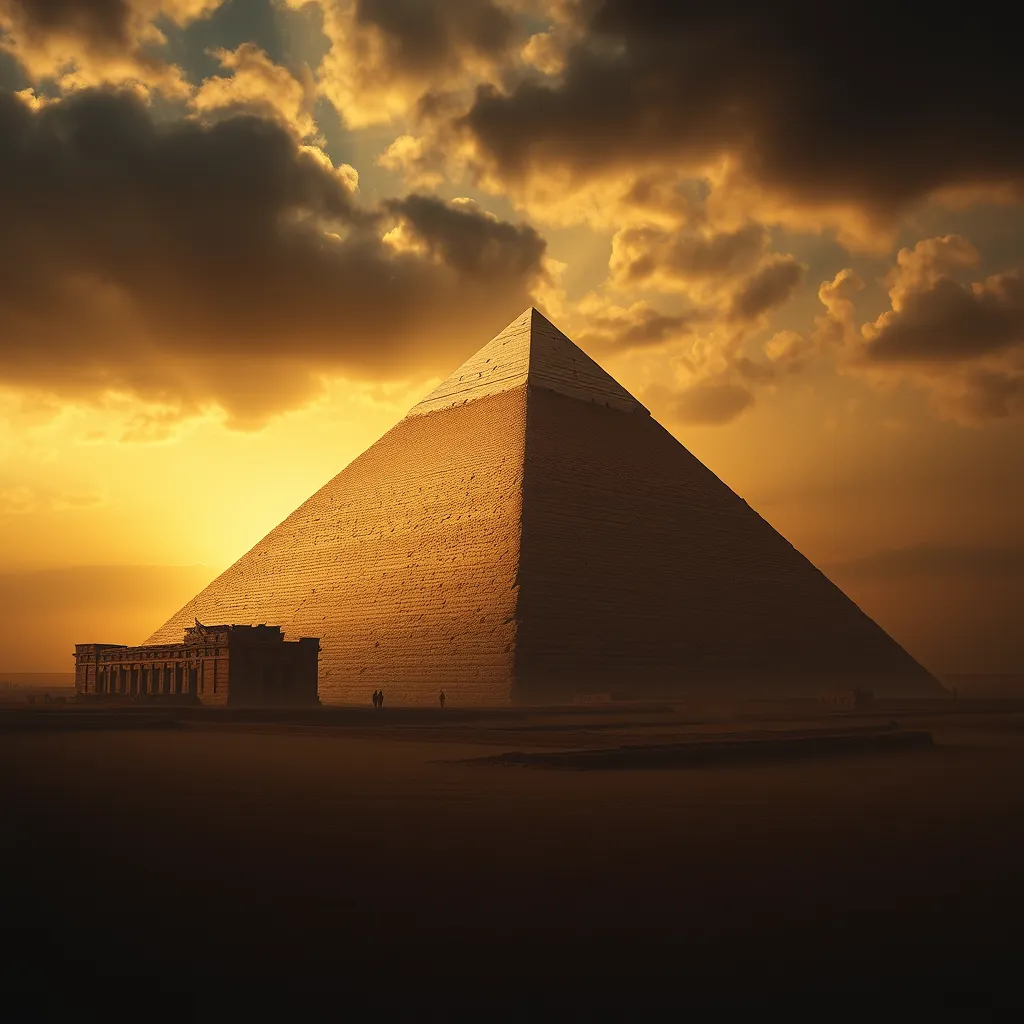The Shadow of the Pyramids: Unraveling the Mysteries of the Ancient World
I. Introduction
The pyramids of Egypt stand as monumental testaments to the engineering prowess and cultural significance of ancient civilizations. These awe-inspiring structures, particularly the Great Pyramid of Giza, have fascinated historians, archaeologists, and the general public for centuries. They are not merely tombs; they are symbols of a complex society with rich beliefs and advanced technologies.
This article aims to explore the myriad mysteries surrounding the pyramids, examining their historical context, architectural marvels, various theories about their purpose, and their impact on culture and society. Through this exploration, we hope to gain a deeper understanding of these iconic structures and the civilization that built them.
II. The Historical Context of the Pyramids
A. Timeline of pyramid construction in ancient Egypt
The construction of pyramids in Egypt spans several dynasties, primarily during the Old and Middle Kingdoms. Key milestones include:
- Third Dynasty (c. 2686–2613 BC): The Step Pyramid of Djoser, designed by Imhotep, marks the beginning of monumental stone architecture.
- Fourth Dynasty (c. 2613–2494 BC): The construction of the Giza Pyramids, including the Great Pyramid of Khufu, was realized during this period.
- Fifth and Sixth Dynasties (c. 2494–2181 BC): Pyramids became smaller and less complex, reflecting changes in royal burial practices.
B. The role of the pyramids in Egyptian society and religion
Pyramids were not just grand tombs; they were central to the Egyptian belief system. They served as gateways to the afterlife, where the pharaohs would ascend to become gods. The construction of these structures was a communal effort, involving thousands of laborers, craftsmen, and engineers, reflecting the organized social structure and religious devotion of ancient Egypt.
III. Architectural Marvels: Engineering Techniques of the Ancient Egyptians
A. Construction methods and materials used
The construction of the pyramids involved sophisticated engineering techniques and extensive resources. Key aspects include:
- Materials: The primary material used was limestone, quarried locally for the core blocks, while higher-quality Tura limestone was used for the outer casing.
- Labor: Contrary to popular belief, the workforce consisted of skilled laborers who worked in rotating shifts, not slaves.
- Tools: Copper tools, wooden sledges, and levers were utilized to move and position the massive stones.
B. The significance of geometry and astronomy in pyramid design
The design of the pyramids reflects the ancient Egyptians’ advanced understanding of geometry and astronomy. The pyramids were aligned with incredible precision to the cardinal points and featured intricate designs that mirrored celestial bodies, showcasing their beliefs in the cosmos and the afterlife.
IV. Theories Behind the Purpose of the Pyramids
A. Tombs for Pharaohs and their afterlife beliefs
The most widely accepted theory is that the pyramids served as grand tombs for pharaohs, embodying their journey into the afterlife. Egyptians believed in an eternal life after death, and the pyramids were designed to protect the deceased and ensure their successful passage to the afterlife.
B. Alternative theories (e.g., astronomical observatories, power symbols)
In addition to their role as tombs, some researchers propose alternative theories regarding the purpose of the pyramids, including:
- Astronomical observatories: Some suggest that the pyramids functioned as observatories for tracking celestial events.
- Power symbols: The pyramids may have served as symbols of power and unity, reinforcing the pharaoh’s divine authority over the land.
V. The Pyramids and Their Relationship with Other Ancient Structures
A. Comparison with other ancient wonders (e.g., Stonehenge, the Great Wall)
The pyramids of Egypt are often compared to other ancient wonders, such as Stonehenge and the Great Wall of China. While each structure serves different cultural purposes, they all share a common trait: they are monumental achievements of engineering and artistry that reflect the values and beliefs of their respective societies.
B. Influence on subsequent architectural styles
The design and construction techniques of the pyramids have significantly influenced subsequent architectural styles across cultures and epochs. They inspired the construction of temples, tombs, and monumental structures throughout history, showcasing the enduring legacy of ancient Egyptian architecture.
VI. Archaeological Discoveries and Ongoing Research
A. Recent findings that shed light on pyramid construction
Recent archaeological discoveries have provided new insights into the methods used in pyramid construction. Techniques such as:
- Remote sensing technology to map hidden chambers and tunnels.
- Analysis of worker camps that reveal details about the labor force.
- Studies of the transportation of stones from quarries to building sites.
B. Challenges faced by archaeologists in studying these ancient structures
Despite advancements in technology, archaeologists face numerous challenges, including:
- Preservation of the sites against natural erosion and human interference.
- Limited written records from ancient times complicating interpretations.
- Political and social issues in Egypt affecting archaeological work.
VII. The Mystique of the Pyramids in Popular Culture
A. Representation in literature, film, and art
The pyramids have been a source of inspiration in literature, film, and art. They often symbolize mystery and ancient wisdom, appearing in various narratives and artistic expressions that capture the imagination of audiences worldwide.
B. The impact of conspiracy theories and myths on public perception
Conspiracy theories and myths surrounding the pyramids, such as alien involvement in their construction or hidden treasures, have proliferated in popular culture. These stories contribute to the mystique of the pyramids, often overshadowing the historical and archaeological facts.
VIII. Conclusion
The pyramids of Egypt continue to captivate our imagination, serving as reminders of a civilization that achieved remarkable feats in engineering, art, and spirituality. As we delve into their mysteries, we uncover not only the history of the pyramids but also the enduring legacy of the ancient Egyptians. Continued exploration and research are vital to unlocking the secrets of these iconic structures, ensuring that they remain a source of wonder for generations to come.





